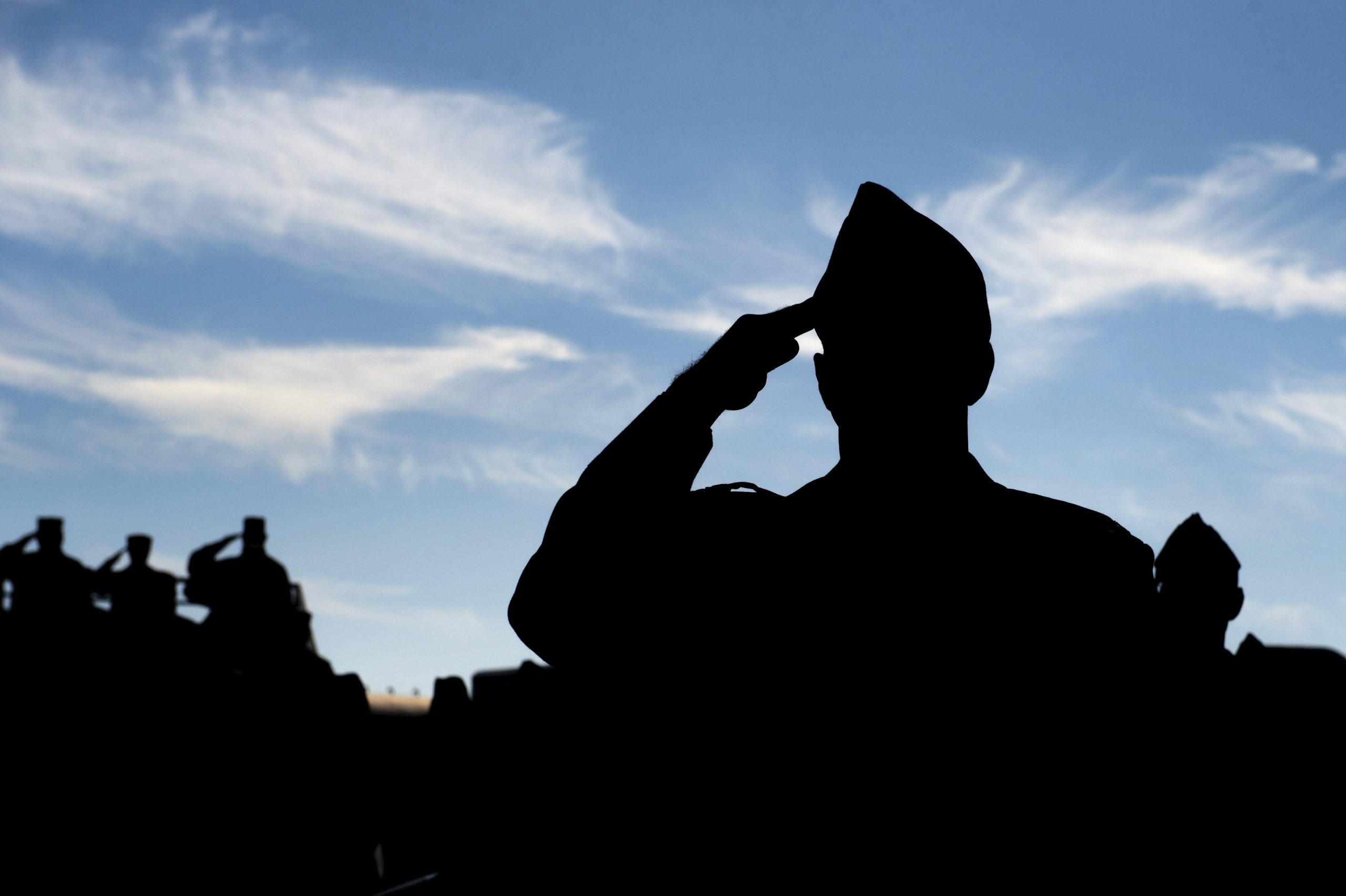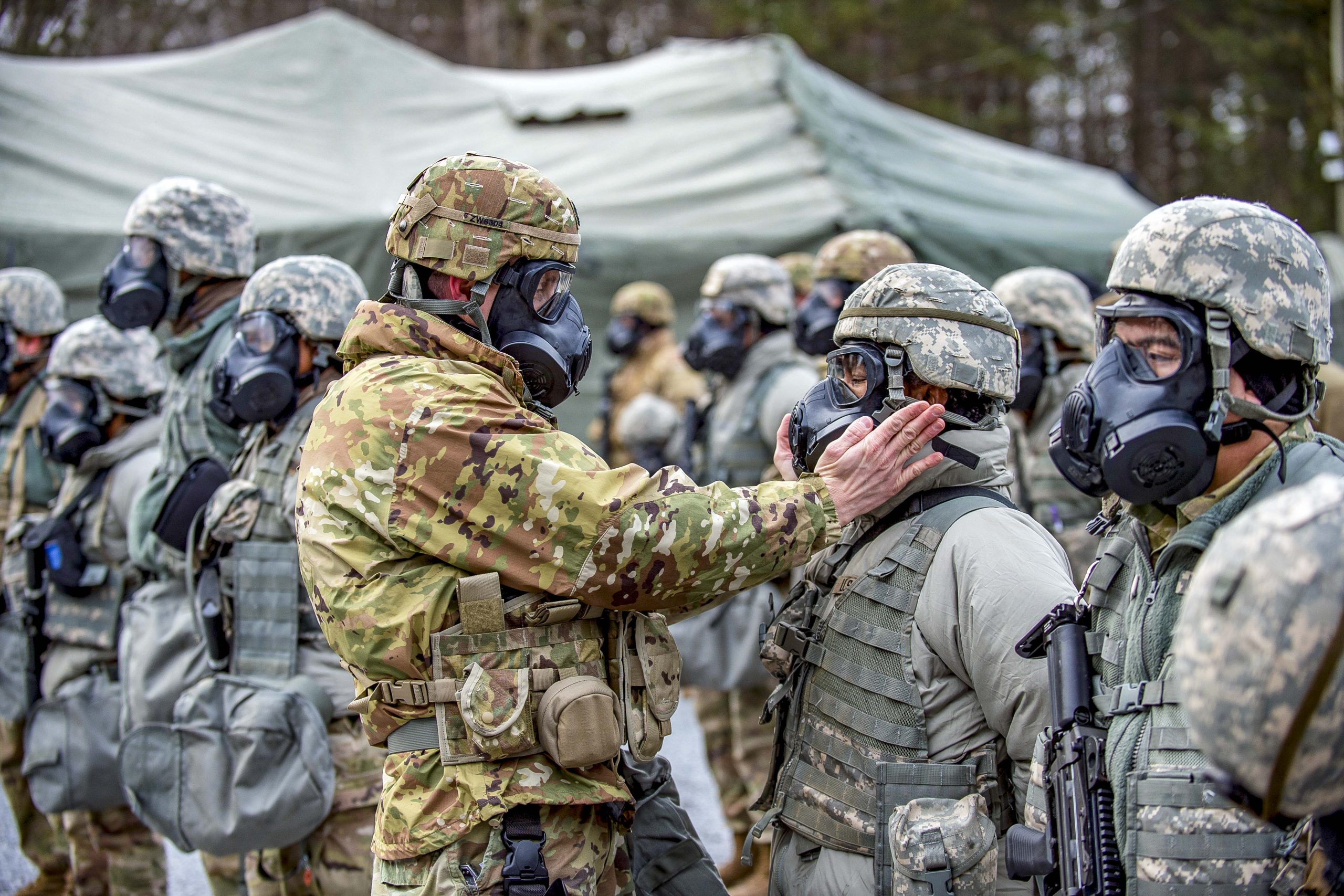
U.S. Air Force Airmen render a salute during a change of command in Germany, Sept. 04, 2019. (U.S. Air Force photo by Airman 1st Class Branden Rae)
You can take the service member out of the military. It’s very hard to take the military out of the service member. It’s not that it can’t be done, only that it’s very difficult…and the service member may resist it kicking and screaming.
When discussing the need to see military life as a separate culture, we need to understand that there are different aspects of culture. There are explicit characteristics of a culture, which are the observable characteristics of that culture, and implicit characteristics, the underlying mindset and values that are associated with that culture. This applies clearly to the military; we have our explicit characteristics, such as uniforms, rank, insignia, even behaviors like marching or military formations. We also have our implicit characteristics, the internalized values and perspectives that are developed during our time in the military.
Explicit characteristics don’t always last, especially when it comes to military culture. The uniform remains where it is after a service member takes it off for the last time. That explicit characteristic of the service will never be used in the same way again. We may wear certain uniforms for special occasions, maybe, but it will not be as a member of the military. You can’t simply hang the implicit characteristics of military culture up in the closet, however. We don’t throw our values in the corner, nor should we want to. Understanding the different nature of our explicit and implicit characteristics can help service members to transition.
Explicit Characteristics
As I mentioned, explicit characteristics are those things you can see: uniform, hairstyle, rank, etc. In my experience, when someone is giving a “military culture” presentation to a group, there is a lot of focus on explicit characteristics. The difference between the Army and Air Force. Rank structure. Acronym explanation. I get really frustrated when I attend yet another presentation that tells people what “hooah,” “oorah,” or “hooyah” means (most of the time, we don’t even know what it means, so it means everything).
These explicit characteristics are often external symbols of implicit characteristics. They’re things that people can see, which represent the culture, and they’re different even within subcultures. One explicit characteristic of the Army is that you don’t see them without their headgear outside. You don’t see them with their hands in their pockets, and you don’t see them walking and talking on the telephone…unless you happen to be in the part of the base where the Special Forces units are located, in which case you WILL see these things. Once I left the military, I don’t wear hats all the time. I sometimes put my hands in my pockets, and walk and talk on the phone all the time. Those observable characteristics, like the uniform that I took off, don’t always last.
Implicit Characteristics
Implicit characteristics, by contrast, are deeper and more constant. They’re not as easily removed as the explicit characteristics. These are the underlying values and unwritten norms of behavior that are associated with military service. Just as important as explicit characteristics, these tend to remain in the veteran population after a service member is no longer in the military.
Assimilation into the military culture instills values, beliefs, and traditions that impact a service member’s world view. Those affiliated with the military have more of a global perspective. We see things like culture and politics differently, due to multiple duty assignments. This global perspective is often out of place if the service member returns to a community that does not have the same perspective or world view.
The implicit characteristics also apply to the values themselves. Most service members internalize military values such as sacrifice, honor, humility, collective effort, and a desire to limit risk or harm to others. The miltiary is a mission-focused and both process oriented and results oriented organization. The nature of military service is collective and mutually supportive in nature of the military. Teamwork is critical to success rather than individual effort. These implicit characteristics don’t go away when we leave the military…and don’t always fit in with where we find ourselves after the military.
Keep Some, Lose Some
Sometimes, explicit characteristics change based on the transition between military and veteran culture. I don’t wear my uniforms anymore…unless you count the cutoff uniform shorts I wear in the summer, or the old Army physical fitness gear I still wear sometimes. I still have my unit T-shirts, and folks still wear their hats or put stickers on their vehicles to display their pride in service. There’s nothing wrong with that, unless you do it too much. There are also some explicit behaviors that don’t seem to change for some; sure, I put my hands in my pockets. That behavior changed, but I still can’t seem to sleep past 4:30. Waking up at 6:00 am is like sleeping in for me. I can’t seem to change it, but then again, I haven’t really tried.
That’s the key with both implicit and explicit characteristics of the culture. We can choose which to keep, like I chose to keep some items that remind me of my military service, while others ended up at the thrift store. We can also chose which implicit characteristics to keep. Is adhering completely to the mission-focused mindset getting in your way? Then we can learn to modify that. Looking down on “civilians” in a derogatory way? Not losing that attitude will continue to frustrate veterans. We can choose which of both we want to keep, because they’re beneficial or we enjoy them, and which we want to lose. In this way, we can find a measure of balance and satisfaction between our military experiences and post-military life.
Do you want to help offset some of the costs of the Head Space and Timing Blog and Podcast? Want to show your appreciation and support? You can put some paper in the tip jar by going hereor clicking the button below
 Want to learn more about veteran mental health? The first HS&T Book has recently been released in paperback. Click on the image to the left or this link to purchase the book. See what people are saying about it: This compilation of Duane’s work is key and essential to anyone working with Soldiers and Veterans. Duane provides a senior NCO’s perspective with unmeasurable experience and knowledge on top of his natural gift for seeing numerous levels of humanality and the challenges faced by those who have served our country. I highly recommend it! – A.C.
Want to learn more about veteran mental health? The first HS&T Book has recently been released in paperback. Click on the image to the left or this link to purchase the book. See what people are saying about it: This compilation of Duane’s work is key and essential to anyone working with Soldiers and Veterans. Duane provides a senior NCO’s perspective with unmeasurable experience and knowledge on top of his natural gift for seeing numerous levels of humanality and the challenges faced by those who have served our country. I highly recommend it! – A.C.
